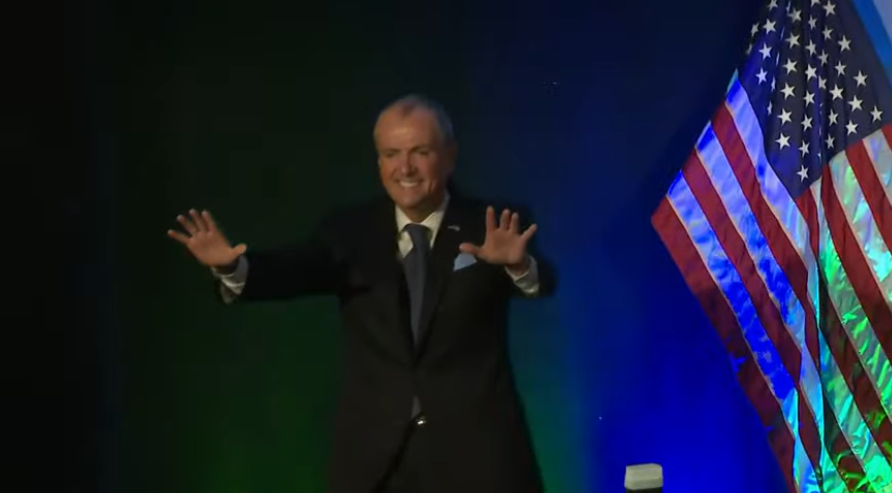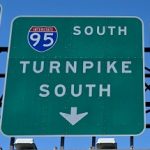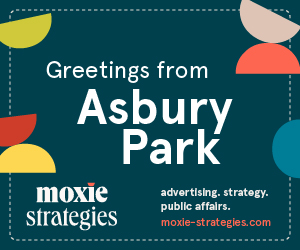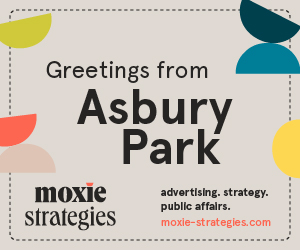Can Murphy Surf Labor’s Big Wave into the White House?

The same week that Gov. Murphy’s crew launched a “Stronger Fairer Forward” campaign designed to promote the term-limited Governor as a friend of working people, nurses at St. Michael’s Medical Center in Newark prevailed in their month long strike against the private for profit hospital. Throughout their ordeal, which played out on the backend of the pandemic, the nurses drew widespread local support as the 350 member union tried to turn ‘hand clapping and pot banging’ appreciation into something they could take to the bank.
“We got a lot of community support but the Mayor [Baraka] never came out but his mother [Amina Baraka] did and so did Senator Cory Booker,” Elfrieda Johnson, president of JNESO AFL-CIO District 1, told InsiderNJ as her members were about to vote on the landmark contract which raises her members’ wages and improves both their healthcare as well as their pension benefits. “Two days after we went on strike the nurses at University Hospital got their raise.”
The union, which also represents respiratory therapists, radiology techs, and CV techs as well as other medical professionals went out on strike on May 23, after their contract expired earlier in the month. Johnson said the three-year deal was approved “overwhelmingly” by the rank and file.
“These hospitals received a lot of money for taking care of patients during the pandemic,” said Charlie Wowkanech, president of New Jersey’s AFL-CIO. “And we saw management willing to offer these people just a two percent raise. How can you take just a two percent raise when fuel and all the basic staples a family needs to buy milk and cereal are going up so much more?”
“We are thrilled that the rank-and-file members of the union approved what we believe is a fair contract proposal,” said Dr. Alan Sickles, CEO of the private-for-profit hospital. “While it’s unfortunate that we could not have negotiated this agreement without a strike, we are looking forward to having our nurses and medical staff return to their jobs.”
Back in 1867, Saint Michael’s Medical Center was started as a non-profit hospital founded by the Franciscan Sisters of the Poor. Today, it’s a 357-bed teaching and research hospital that was the first hospital in New Jersey to perform open-heart surgery. The Newark institution had to declare bankruptcy in 2015 because it could not make its payments to the New Jersey Healthcare Facilities Financing Authority.
It was bought in May of 2016 by Prime Healthcare Services, a private, for profit company which now has 42 hospitals in 14 states employing 42,000 employees. Prime also owns St. Mary’s Hospital in Passaic and St. Clare’s in Denville, Dover, and Boonton Township. “Because it is a privately owned company, Prime Healthcare Services’ financial information is not available, although Hoover’s estimates annual revenue for 2016 at $3.11 billion,” according to Merger Monitor, a newsletter put out by Health Professionals and Allied Professionals, New Jersey’s largest healthcare union.
A NEW MILITANCY
Increasingly, unions, emboldened by their sacrifice during the pandemic and predator inflation as their reward, are willing to take militant action in ways not seen for a generation. It’s a time of great tumult and change where anxiety as well as prices are both running high. We may have a nostalgic idea of what we were, but it’s anyone’s guess what we are becoming.
Last year, according to the Bureau of Labor Statistics, 47.4 million Americans left their current job. To get a sense of the scale of this upheaval, consider the AFL-CIO, with its 57 constituent unions has an enrollment of 12.5 million members.
While the recent victory by the independent Amazon Labor Union, led by New Jersey resident Chris Smalls, to organize the global giant’s largest Staten Island facility made headlines, workers in established bargaining units appear to be increasingly empowered. And according to the Gallup poll, Americans have labor’s back with a 68 percent approval rate, the highest recorded by the pollster since 1961.
Last year, the Washington Post reported that in “startling numbers” U.S. workers were bucking a thirty years and resorting to striking in the face of rising wealth concentration and growing inequality.
“In this pandemic moment, workers are again more difficult to replace,” The Washington Post reported. “With millions quitting their jobs in what’s being called “the Great Resignation” and others unable to work because of a lack of child care or other supports, many businesses can’t find staff. And supply chains have been disrupted in unprecedented ways due to shortages of truckers, shipping containers, and covid workplace closures. In some ways, the moment is ripe for strikes: Workers have power and frustrations, and can see strikes succeeding elsewhere — including beating back concessions, sometimes just with the threat of a strike.
COVID’S LONG SHADOW
Two plus years into a pandemic that’s killed over one million, tens of millions of Americans have opted to leave their existing job to retire early, shift careers, stay home to attend to family or nurse themselves back from long COVID which has cast a shadow over the health of millions of Americans. A recent GAO study found that as many as 23 million Americans are dealing with ‘long haul’ COVID with as many as one million Americans being forced out of the workforce as a consequence of their bout with the killer virus.
There is no registry of essential workers who died during the pandemic although collectively unions have identified thousands. The CDC is now undertaking the first of its kind occupational health based analysis of the impact on America’s frontline workers.
Municipal governments continue to struggle to get their local economies back to where they were before the pandemic. After Local 54 of Unite Here, which represents workers at the Borgata, Caesars, Harrah’s and Tropicana, voted earlier this month to go on strike July 1, the Atlantic City Council urged the casino industry to raise wages and hire more workers, the Associated Press reported.
“Inflation is pressuring working people, and we want the union workers and families to be made whole,” Atlantic City Council Member Kaleem Shabazz, told AP’s Wayne Parry. “Atlantic City needs a peaceful summer free of strife and uncertainty. The Council encourages good faith negotiations to reach a peaceful resolution.”
Just a few days before St. Michael’s nurses got to the promised land, hundreds New Jersey Transit engineers called in sick resulting in the commuter rail line schedule melting down on Friday June 17, the start of the three-days Juneteenth weekend. The engineers’ contract had expired in May of 2020, when all the other NJ Transit unions had reached a collective bargaining agreement with the transit agency establishing Juneteenth a paid holiday.
That same day, New Jersey Transit wasted no time taking the the Brotherhood of Locomotive Engineers and Trainmen to court, where the New Jersey Monitor reported union chairman James Brown admitted “sending an email to members days before Juneteenth urging them to ‘celebrate’ the holiday.”
Reached by phone by InsiderNJ on June 23, Brown was more circumspect only confirming that negotiations were ongoing and that he would have no comment on them nor on the ongoing litigation which has the union back in court July 5.
As the Monitor reported Murphy went “‘a little PG-13’ in a television appearance Monday night, saying he was ‘pissed’ about the union work action and its disruption of NJ Transit’s train service.”
“This is completely and utterly unacceptable,” Murphy said. “It wasn’t a cold, snowy Tuesday in January. These guys did this knowing it was a Friday in the summer on a holiday weekend, trashing people’s either work commutes or holiday plans — completely despicable.”
TRAIN BRAIN DRAIN
Historically, New Jersey Transit’s management, let contracts lapse for years with a kind of ‘where you going to go’ plantation mentality. Under Gov. Chris Christie, the NJ Transit contracts had lapsed for five years, with a strike imminent, before the state closed a deal.
There were consequences. As a result of the company’s strategy, wages fell further and further behind what was being paid east of the Hudson at the MetroNorth Railroad and the Long Island Rail Road, which increasingly drew away NJ Transit’s union and white collar talent.
Jerome Johnson, the general chairman of SMART [International Association of Sheet Metal Air Rail and Transportation Workers] Local 60 which represents NJ Transit’s 1,400 conductors, told InsiderNJ that under the Murphy administration his union had seen a marked improvement in labor management relations starting with their 2020 contract deal.
“In the past, they always let the contracts lapse but I must say this time we signed a contract just six months after the last one expired,” Johnson said. “That’s the first time that’s happened and I have been here for 24 years. We did this by the union working with the company in a good faith basis that this [a timely contract] was something we needed. We didn’t want to wait years and years just to get back pay that get’s heavily taxed.”
Johnson said he strongly supported the NJ AFL-CIO’s call for $100 million in hazard pay for front line workers like his members, some of whom died in the pandemic. “I don’t think anybody except the healthcare workers and staff like that deserve hazard over us—we are equivalent to police and firefighters. We got them to work everyday.”
A REVIVAL DECADES IN THE MAKING
Last month, Rutgers University’s Labor Education Action Research Network reported that New Jersey’s percentage of unionized workers had ticked up to over 16 percent, as compared to the 10.3 percent nationally. Public sector unionization grew by 3.33 percent from 2019 through 2021 with now almost 60 percent organized.
Overall, the state ranks sixth in terms of union density, behind Hawaii, New York, Washington, Oregon, and Minnesota.
“We’ve always had a high unionization rate among teachers, police officers, firefighters, and construction workers. That hasn’t changed,” said Todd Vachon, the director of Rutgers LEARN. “But after the pandemic and two years of worker unrest, we’re seeing a resurgence in labor organizing in the service industry, with younger workers at the forefront.”
Wowkanech believes labor’s revival was at least 25 years in the making with the embrace by both political parties of a succession of free trade deals like NAFTA, that resulted in the exporting of so much of the nation’s manufacturing base which came back to haunt the country during COVID when it had become entirely reliant on importing the most basic PPE supplies including N-95 masks. At the same time, wealth concentration and income inequality reached historic levels.
“We saw with the pandemic a tipping point,” he said. “The American workforce, the American people have woken up and said enough of this and I give the younger generation credit for standing up like with Starbucks where they are standing up to billionaires. The scales of inequality, economically and socially have slid to far and so its not just younger workers but look at the ages of the workers at St. Michael’s [on the picket line] with 20 to 25 years of service.”
Throughout Gov. Murphy’s tenure, he’s taken some heat from some quarters for being too close to the union movement and its fair bet he’d could count on their support in the early rounds of a possible presidential bid. The initial written copy for the $2 million Murphy ad campaign that I saw didn’t mention the word “union” specifically but described how the former Goldman Sachs partner “invested record amounts in education and job training, increased the minimum wage, and made child care more affordable.”
Throughout the pandemic, he avoided the adversarial stance over mandatory vaccination for public employees that Mayor Bill de Blasio took. Yet, he has not endorsed paying out pandemic hazard pay for frontlines unions despite $3 billion in unexpended federal COVID aid and a $10 billion state surplus. Several jurisdictions across the country have done so, citing language in the American Rescue Plan, that was passed by Congress in the early months of the Biden presidency.
It still unclear even after five years in office, if Gov. Murphy, a multi-millionaire with a villa in Italy, can portray himself authentically as ‘Amtrak’ Joe Biden did to win the highest office on the land. “Phil Murphy was raised in a family that he often says was “middle class on a good day.” In reality, they were working poor.”
Yet, the word “union” isn’t invoked in the Murphy ad campaign which suggests he’s out of touch with the upheaval all around him.
“I did better than my parents,” Murphy is quoted in the ad as observing. “That dream is supposed to be the promise of America. Yet today, the American Dream that worked for family like mine feels out of touch for too many.”
The tone of the Murphy message is insulated from what the past two years have been like for the essential workforce that now has to chase down legislators in Trenton for hazard pay. It’s much later in the national narrative than pricey political consultants realize.
New Jersey veteran labor leader Charles Hall, president of RWDSU Local 108, represents essential workers in a range of workplace settings from nursing homes to supermarkets. He says since the late 1960s, when Dr. Martin Luther King first called for a multi-racial Poor People’s Campaign he did not live to see convened, workers have lost considerable ground as wages declined or stagnated.
“Fast forward to today and the middle class has been pushed down to a lower economic situation,” Hall said. “And now the conversation about poor people, with the exception of Rev. William Barber, is just not happening. We are talking about war, we are talking about everything else.”










You cite the statistic that NJ public sector unionization rates ticked up 3.3% to 60%, but that could be a result of the a smaller public sector workforce. If the denominator shrinks and the numerator stays the same or shrinks less than the denominator, then the ratio (the percentage) will increase. The use of a relative statistic doesn’t tell us very much. The question is: has the number of unionized public sector workers grown?
May God save us from such a disaster!
Don’t think so. Murphy has screwed this state so bad, that the Monmouth University polls show that 59% of New Jerseyans want to move out of state sooner rather than later. Reason No. 1: HIGHEST PROPERTY TAXES IN THE NATION!!!!!
The results show that 69% of Republicans want to move compared to 47% of Democrats. In 2014, there was no partisan difference — 48% of Democrats talked about leaving versus 46% of Republicans.
New Jersey led the nation last year with 70 percent of the people involved in moves fleeing the Garden State, compared to just 30 percent who migrated in, according to United Van Lines’ National Movers Study. Neighboring New York ranked third worst, with 63 percent of movers headed for the exits and 37 percent settling in.